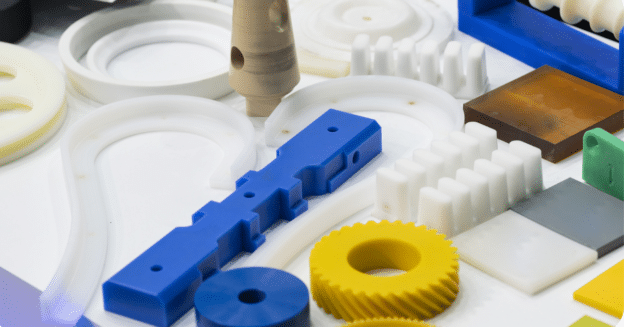Cast urethane provides end-use, flexible, and rigid parts with production-level quality. The process of casting urethane utilizes a machined master pattern to create a soft mold. The mold delivers cost-effective short to medium-run volumes and high-quality parts (hard molds used as well). This is an excellent alternative to a high-volume injection molding process. In this post, we are going to discuss exactly what cast urethane is and how its usage in manufacturing happens.
Cast Urethane: The What and How
Urethane casting is like injection molding in that the former requires a tool with a cavity in the silhouette of the final product. The biggest difference is that the urethane casting process involves pouring liquid urethane resin into an open mold. Whereas injection molding forces material into a closed mold through a port. Open cast urethane also involves using thermoset plastics. They have very favorable properties when compared with the thermoplastic materials used in the injection molding process.
If you’re looking for a cost-effective option for producing a prototype or low to medium volume runs of urethane parts with production-level surface finishes and properties, cast urethane will be a wise choice.
Casting urethane involves 3 major steps:
Creating the Mold
First things first, it is decided whether a mold or a hobb (master pattern) will be made for the desired part. A mold is generally used for parts that need to hold strict tolerances on all dimensions. For example, urethane seals, gaskets, and other critical parts. Hobbs, on the other hand, are used for parts that are not as critical such as urethane bumpers, pads, covers, bushings, etc. Hobbs, or master patterns, are the most commonly used method for manufacturing most urethane parts due to their economical pricing. If you want to learn more about Hobbs, click here.
Pouring
Next, the pouring of a compounded urethane material into the mold occurs. Then the placement of the mold into an oven or on a hot table happens in order to speed along the curing process. This is where the liquid material begins to harden in the shape of the mold cavity.
Demolding and Curing
Finally, once the mold has been filled with material, it will harden to an extent. This allows a production worker to remove the freshly poured urethane part from the mold so that they can pour another part. Although the part has hardened enough so its removal from the mold is possible, it still needs to cure in the oven for at least another hour or two depending on the formulation. This ensures that the reaction is complete, and the part is ready for end use.
Benefits of Using Cast Urethane
Urethane casting has a quick turnaround and a low-cost for superior quality plastic parts. This is especially if compared to that of injection molding. While a cast urethane mold is economical and easy to produce off the master pattern, injection molding requires expensive investment up-front for the machining of the mold.
This is why cast urethane has become the go-to solution for manufacturers. And, for business owners looking to do low to medium volume production or on-demand prototyping. Whether you need to make rubber-like, colored, clear, flexible, or rigid plastic parts, the urethane casting process can handle it all.
Speak To Us For High Quality Cast Urethane and Polyurethane Parts Made in the USA
As one of the leading manufacturers of cast urethane products and parts in the country, Uniflex Inc. offers a wide range of possible combinations of materials, finishes, and markings for your required specifications. Our experienced team can help you make the most appropriate and cost-effective buying decisions. To know more, please call us at 248-486-6000 or contact us online to get started.


